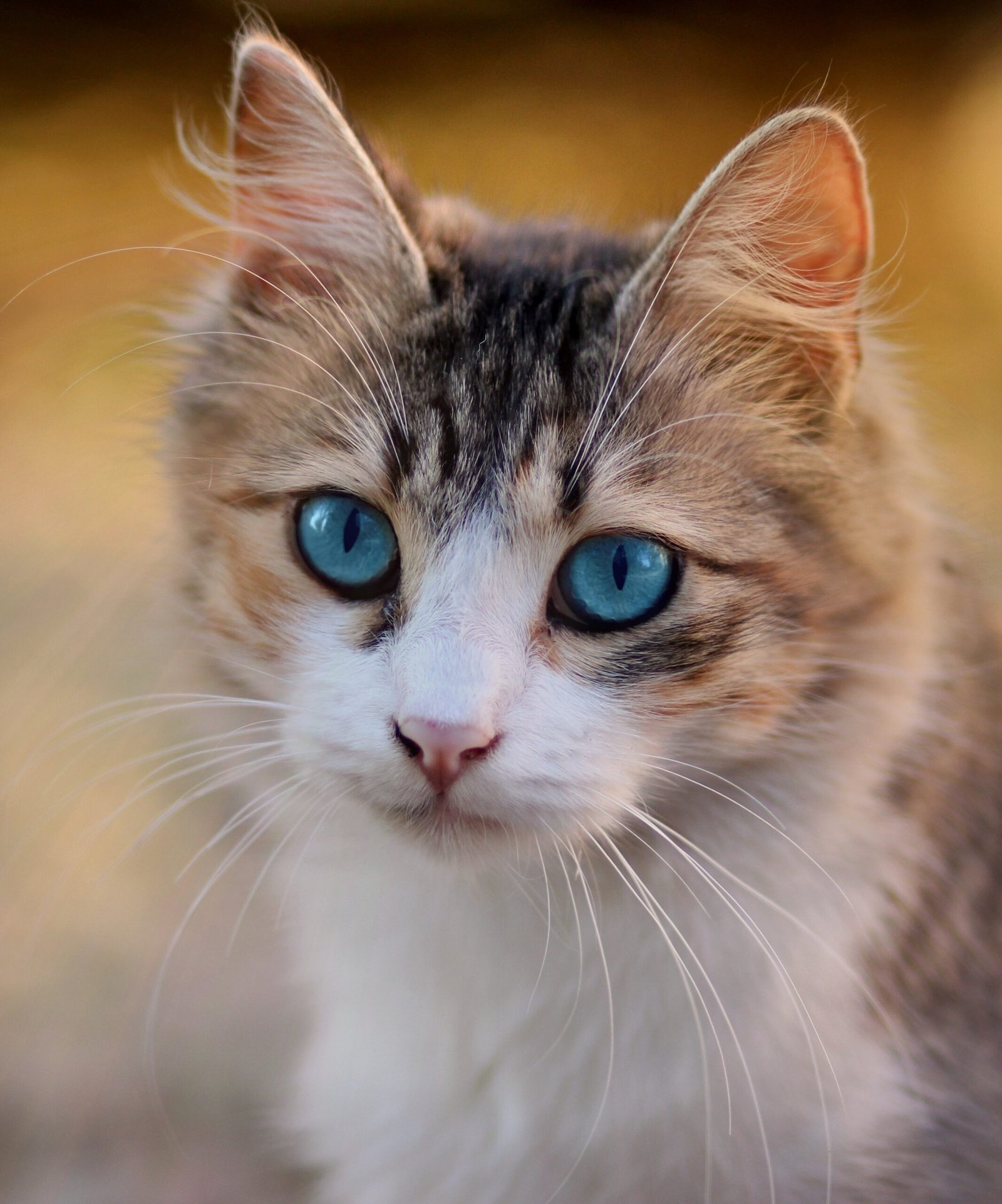Have you ever witnessed the slow, heart-melting transformation of a scared rescue cat into a trusting companion? It’s a journey filled with tiny miracles and emotional breakthroughs. Every little sign that your rescue cat is finally letting go of their fears feels like a victory—sometimes so subtle, you might miss them if you’re not looking closely. These precious moments are what make the bond between human and rescued feline so powerful and unforgettable. If you’ve ever wondered whether your once-timid cat has finally started to trust you, here are ten subtle signs that reveal their heart is opening up.
Softening Eyes and Slow Blinks

A cat’s eyes can tell you a lot about how they feel. When your rescue cat starts giving you slow, deliberate blinks, it’s a sign of trust and relaxation. Cats use slow blinking as their version of a smile—it’s their way of saying they feel safe in your presence. You’ll notice that their eyes aren’t wide with fear anymore; instead, they appear soft, gentle, and less guarded. These slow blinks are like secret love letters exchanged across the room. Sometimes, your cat might even keep their eyes half-closed while looking at you, showing complete comfort and lack of fear. This shift from wide, wary eyes to calm and gentle gazes is one of the first signs your cat is truly letting go. If you return the gesture with your own slow blinks, you’re speaking their language of trust.
Choosing to Sit Near You

A rescue cat that has finally relaxed will start to choose your company, even if it’s just sitting a few feet away. At first, they might have hidden under furniture or avoided being in the same room. Now, they venture out and settle close by, maybe on a windowsill or the end of the couch. They might not be ready to climb onto your lap yet, but their decision to simply be near you is a huge step forward. It shows that they feel safer in your presence than alone in hiding. You might notice them quietly observing you, or even dozing while you’re nearby. This is their way of saying, “I trust you enough to relax when you’re around.” It’s a silent but powerful message of acceptance.
Gentle Head Butts and Rubbing

When a rescue cat starts to offer gentle head butts or rubs their cheeks against you, it’s a sure sign they’re forming a bond. This behavior, known as bunting, is how cats mark their territory with their scent glands. If your cat is bunting you, it means they see you as part of their safe space—almost like claiming you as family. At first, these gestures might be hesitant or brief. But with time, they become more confident and affectionate. You might catch your cat rubbing against your leg, your hand, or even your face. Each little bump or nuzzle is filled with trust and affection, showing that your cat is starting to let go of their past fears.
Playful Behavior Emerges

A rescue cat that feels safe will begin to play, even if it’s just chasing a shadow or batting at a toy. Play is a vulnerable activity for cats because it exposes their bellies, paws, and sides—areas they instinctively protect. When you see your cat pouncing, rolling, or swatting at a toy, it’s a delightful signal that they’re comfortable enough to let their guard down. Sometimes, they’ll invite you to join in by bringing you their favorite toy or playfully stalking your feet. Their playful side might appear suddenly, or build slowly as their confidence grows. This new-found joy for play is a clear indicator that your rescue cat is leaving fear behind and embracing happiness.
Sleeping in the Open

One of the clearest signs that a rescue cat has finally let go is when they choose to sleep in the open, rather than hiding away. In the beginning, you might have only seen your cat at night or caught glimpses of them darting from one safe spot to another. But as they start to feel secure, they’ll nap or stretch out in visible, open areas of your home. Sometimes, they’ll even pick a spot near you or in the middle of activity, showing they no longer feel threatened. Sleeping in exposed places means they trust their environment—and you—enough to let their guard down completely. It’s a vulnerable act that speaks volumes about their comfort.
Purring in Your Presence

Purring is often a sign of contentment in cats, though sometimes it can signal anxiety. With rescue cats, the context matters: purring while snuggled beside you, or when being gently petted, is a beautiful sign of trust. If your cat starts to purr more frequently around you, especially during calm moments, it means they associate you with safety and comfort. This soothing sound is like music to any cat lover’s ears, and it’s a reward for your patience and care. Over time, you’ll find that their purrs become louder and more frequent as their fears fade away. It’s their way of saying, “I feel good with you.”
Displaying Their Belly

For a cat, showing their belly is the ultimate gesture of trust. The belly is the most vulnerable part of their body, and exposing it means they feel completely safe. At first, your rescue cat might have kept their body tightly curled or hidden. But as they grow comfortable, you’ll notice them stretching out, rolling onto their backs, or even inviting a gentle belly rub. Some cats might not want their belly touched, and that’s okay—the act of showing it is trust enough. This behavior is a beautiful, silent statement: “I’m not afraid anymore.” It’s a gesture that melts any cat lover’s heart.
Responding to Their Name or Your Voice

In the earliest days, a rescue cat might ignore you or even flinch at the sound of your voice. But as trust builds, you’ll notice your cat responding when you call their name or speak softly to them. They may perk up their ears, turn their head, or even trot over to you. This responsiveness shows that they recognize you as a source of comfort and safety. Some cats will meow back, chirp, or make other vocalizations in reply. Over time, you’ll develop your own unique way of communicating—a language built on trust and affection. This sign might seem small, but it’s a giant leap for a once-fearful rescue.
Accepting Gentle Touch and Petting

Initially, many rescue cats shy away from touch, flinching or running at the slightest attempt to pet them. When your cat finally leans into your hand, purrs, or even nudges you for more, it’s a heartwarming sign of trust. They may choose when and where they want to be petted, perhaps offering a head or side first. Over time, you’ll notice them relaxing under your touch, maybe even closing their eyes in contentment. Some cats will even seek out cuddles or crawl onto your lap. These moments of physical affection are precious—they show your cat has truly let go of old fears and accepted you as their safe haven.
Following You Around the House

The ultimate vote of confidence from a rescue cat is when they begin to follow you from room to room. This behavior means they genuinely enjoy your company and see you as part of their world. At first, you might find your cat quietly watching you from a distance. As they grow braver, they’ll trail behind you, peek around corners, or curl up in the same room where you’re working or relaxing. This is their way of saying, “I want to be where you are.” It’s a gentle, touching sign that your rescue cat not only trusts you, but truly cherishes your presence.
When you spot these subtle signs, you’ll know your rescue cat has finally let go and found a place where they truly belong.

Linnea is a born and bred Swede but spends as much time as possible in Cape Town, South Africa. This is mainly due to Cape Town’s extraordinary scenery, wildlife, and atmosphere (in other words, because Cape Town is heaven on earth.) That being said, Sweden’s majestic forests forever hold a special place in her heart. Linnea spends as much time as she can close to the ocean collecting sea shells or in the park admiring puppies.






